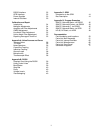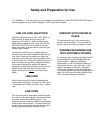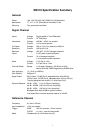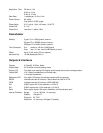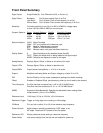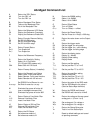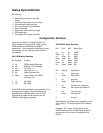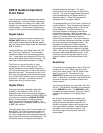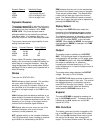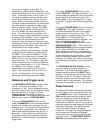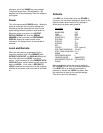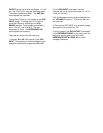8
SR510 Guide to Operation
Front Panel
The front panel has been designed to be almost
self-explanatory. The effect of each keypress is
usually reflected in the change of a nearby LED
indicator or by a change in the quantity shown on
a digital display. This discussion explains each
section of the front panel, proceeding left to right.
Signal
Inputs
There are three input connectors located in the
SIGNAL INPUT section of the front panel. The
rocker switch located above the B input selects
the input mode, either single-ended, A, differential,
A-B, or current, I.
The A and B inputs are voltage inputs with 100
MΩ, 25 pF input impedance. Their connector
shields are isolated from the chassis ground by
10Ω. These inputs are protected to 100V dc but
the ac input should never exceed 10V peak. The
maximum ac input before overload is 1V peak.
The I input is a current input with an input
impedance of 1 KΩ to a virtual ground. The
largest allowable dc current before overload is 1
µA. No current larger than 10 mA should ever be
applied to this input. The conversion ratio is 10
6
V/A, thus, the full scale current sensitivities range
from 100 fA to 500 nA with a max ac input before
overload of 1 µA peak. You should use short
cables when using the current input.
Signal Filters
There are three user selectable signal filters
available; a line frequency notch, a 2X line
frequency notch, and an auto-tracking bandpass.
Each of the filters has a pair of indicator LED's and
a function key located in the SIGNAL FILTERS
section of the front panel. Pressing a key will
toggle the status of the appropriate filter. The
status of each filter is displayed as IN, filter active,
or OUT, filter inactive.
The notch filters have a Q of 10 and a depth of at
least 50 dB. Thus, the line frequency notch is 6
Hz wide and the 2X line notch has a width of 12
Hz. Both of these filters can increase the dynamic
reserve up to 50 dB at the notch frequencies. The
achievable reserve is limited by the maximum
allowable signals at the inputs. The notch
frequencies are set at the factory to either 50 Hz
or 60 Hz. The user can adjust these frequencies.
(See the Maintenance and Repair section for
alignment details.) These filters precede the
bandpass filter in the signal amplifier.
The bandpass filter has a Q of 5 and a 6 dB roll off
in either direction. Thus, the pass band (between
70% pass points) is always equal to 1/5th of the
center frequency. The center frequency is
continually adjusted to be equal to the internal
demodulator frequency. When the reference
mode is f, the filter tracks the reference. When the
mode is 2f, the filter frequency is twice the
reference input frequency. The center frequency
tracks as fast as the reference oscillator can slew
and may be used during frequency scans. The
bandpass filter adds up to 20 dB of dynamic
reserve for noise signals outside the pass band,
and increases the harmonic rejection by at least
13dB. (2nd harmonic attenuated by 13 dB, higher
harmonics attenuated 6dB/octave more.) If not
needed to improve the dynamic reserve or the
harmonic rejection then the filter should be left
OUT.
Sensitivity
The sensitivity is displayed as a value (1-500) and
a scale (nV, µV, mV). When using the current
input, which has a gain of 10
6
V/A, these scales
read fA, pA, and nA. The two keys in the
SENSITIVITY section move the sensitivity up and
down. If either key is held down, the sensitivity will
continue to change in the desired direction four
times a second.
The full scale sensitivity can range from 100 nV to
500 mV. The sensitivity indication is not changed
by the EXPAND function. The EXPAND function
increases the output sensitivity (Volts out /volts in)
as well as the resolution of the digital output
display.
Not all dynamic reserves are available at all
sensitivities. If the sensitivity is changed to a
setting for which the dynamic reserve is not
allowed, the dynamic reserve will change to the
next setting which is allowed. Sensitivity takes
precedence over the dynamic reserve. The
sensitivity range of each dynamic reserve is
shown below.



